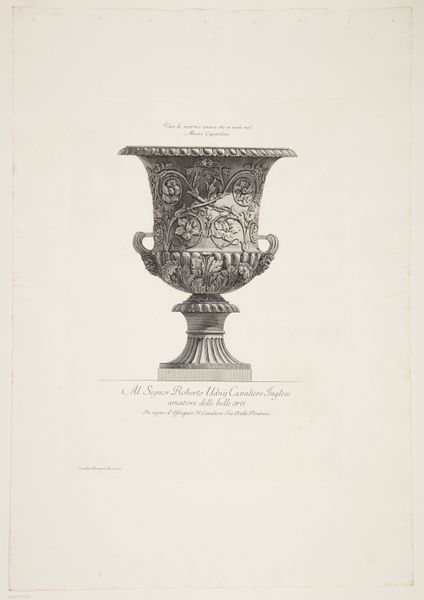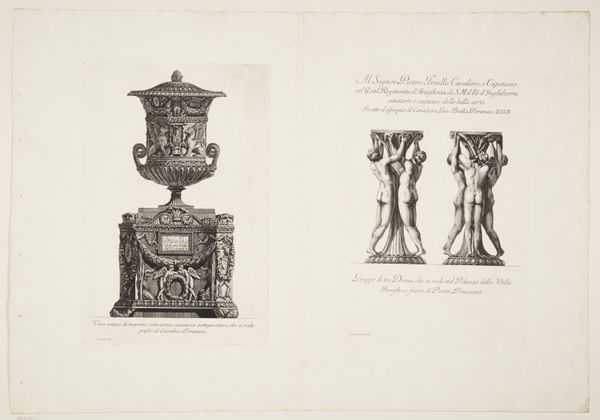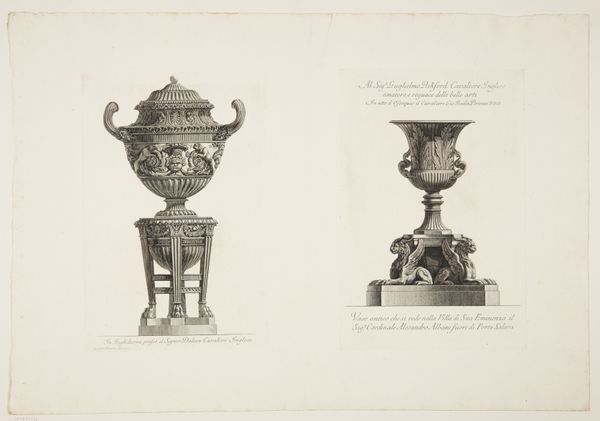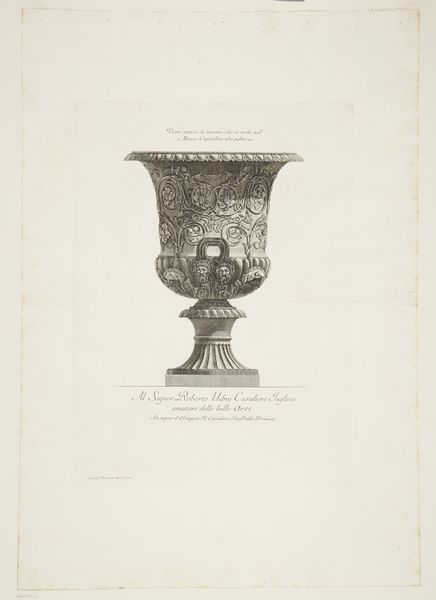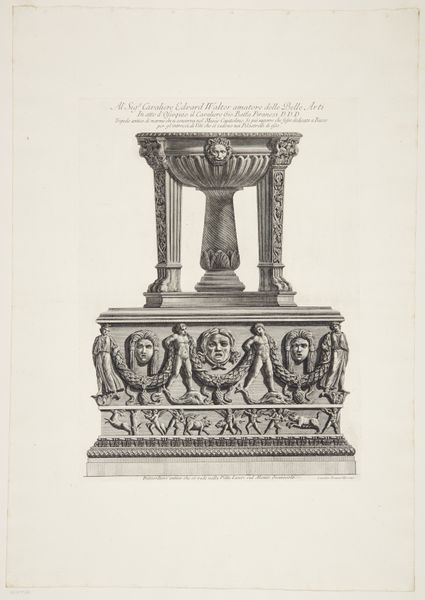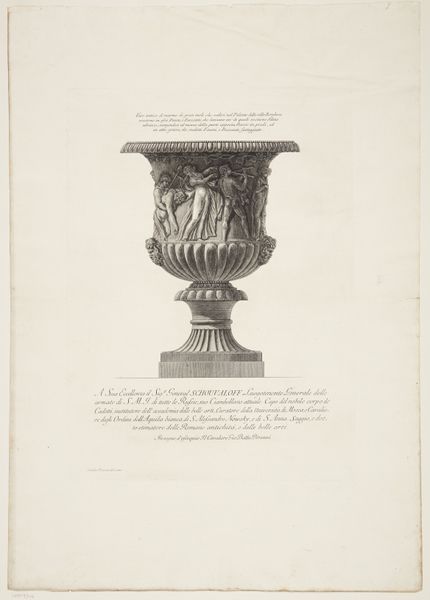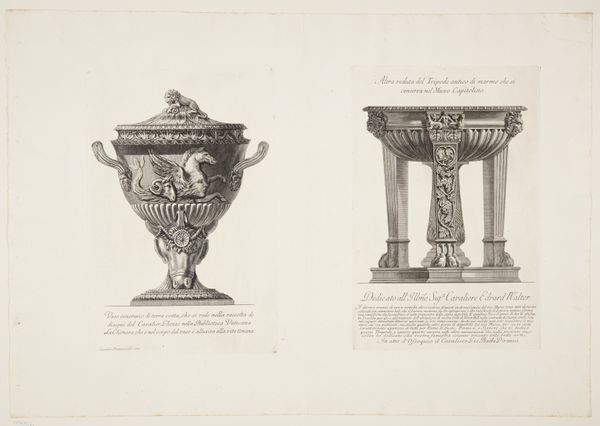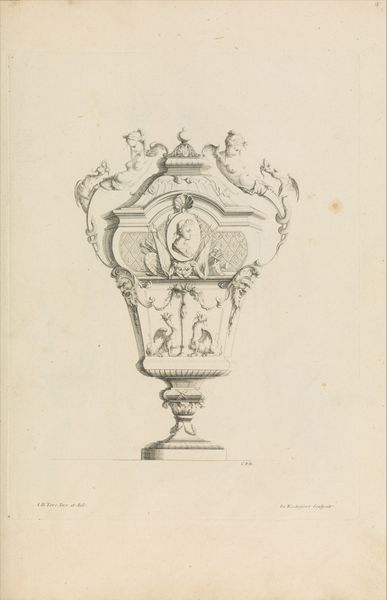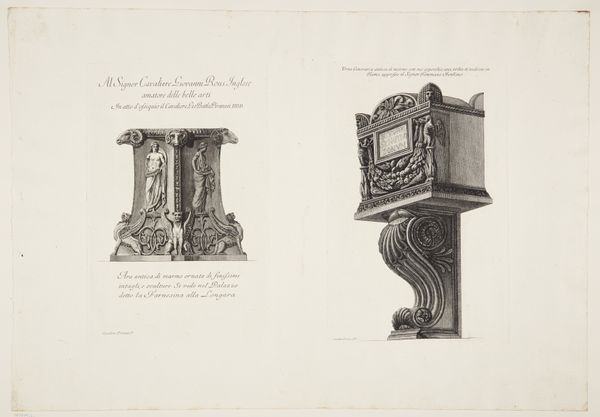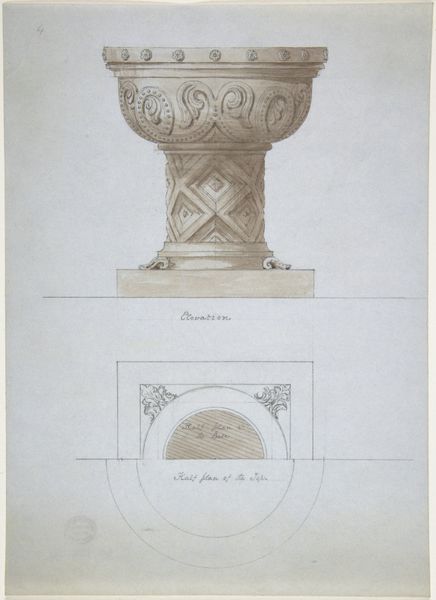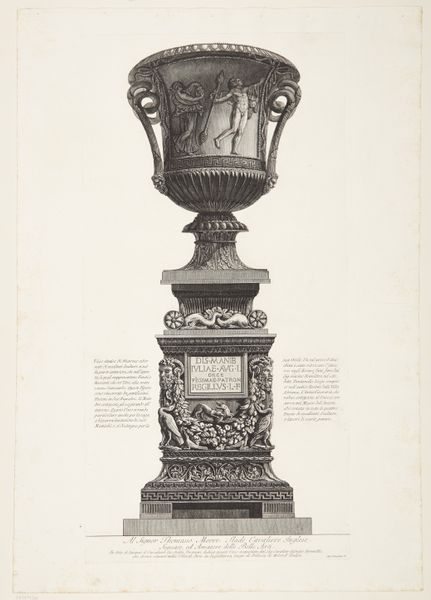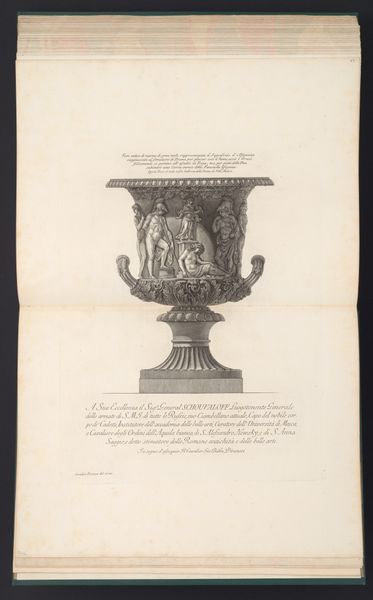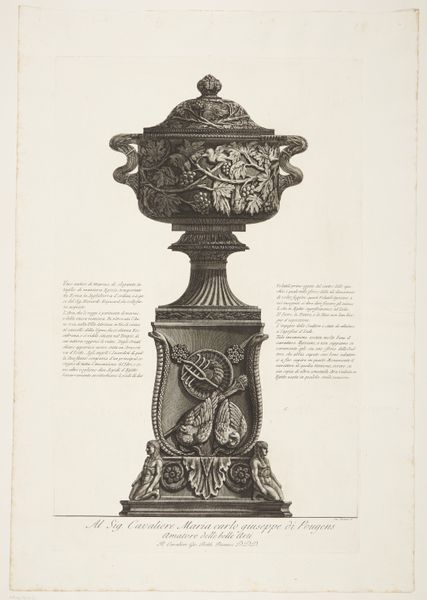
Another view in perspective of the same marble tripod depicted in the precedent plate 1769 - 1778
0:00
0:00
print, engraving
#
neoclacissism
# print
#
greek-and-roman-art
#
engraving
Dimensions: 625 mm (height) x 385 mm (width) (plademaal)
This print of a marble tripod was made by Giovanni Battista Piranesi in the 1700s, using etching and engraving techniques. The image is rendered through labor-intensive processes. Look closely, and you'll see a network of fine lines incised into a metal plate, carefully composed to create a range of tones and textures. This wasn't just a reproductive technique; it was an art form in its own right. The printmaking process involved significant hand work from preparation to printing. Piranesi uses these traditional processes to capture the essence of the tripod, emphasizing its complex forms and decorative elements. Notice the repeating motifs, the lion paws, the fluted bowl. The finished print is an object of cultural and social significance. It belongs to the history of creative practices, not only of fine arts but also of skilled craft traditions. Appreciating the material qualities and production processes used by Piranesi allows us to consider the skill involved in bringing this image to life, and ultimately challenges our assumptions about the boundaries between art and craft.
Comments
No comments
Be the first to comment and join the conversation on the ultimate creative platform.
